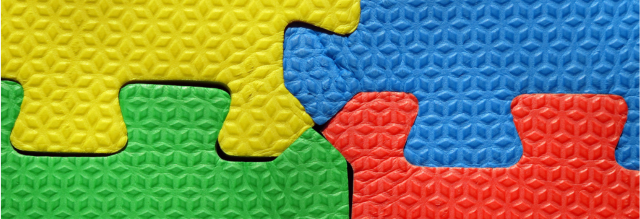Building Effective Leadership by adapting to different DiSC styles
Posted on 17th July 2023 at 12:58
As a certified DISC practitioner, understanding the diverse behavioural styles of those you lead and manage is vital to fostering a productive and harmonious work environment. The DISC model categorises individuals into four primary styles: Dominance (D), Influence (I), Steadiness (S), and Conscientiousness (C). Each style comes with unique strengths and communication preferences, and as a leader, being adaptable to these needs can build rapport and trust among your team members. In this blog post, we will explore practical suggestions on how to interact with each DISC style to encourage the best results and support personal satisfaction as an effective leader.
Interacting with D Styles (Dominance)
When dealing with individuals who exhibit Dominance traits, such as decisiveness and a focus on results, it's essential to cut to the chase. Provide them with the big picture and cover high points quickly. Offer clear directions on what needs to be done and by when, allowing them to find efficient shortcuts. Additionally, involve them kinesthetically and let them share what they learn. Offer praise and avoid being overly critical, while also providing step-by-step procedures for better understanding.
Communicating with I Styles (Influence)
When interacting with those who demonstrate Influence characteristics, such as enthusiasm and sociability, engage in congenial and leisurely conversations. Listen to their suggestions and personal experiences, and be open and responsive. Allow time for socialising and provide clear communication with logical conclusions. Frame suggestions in a positive light, highlighting how they can look good to others and rewarding their achievements publicly.
Helping S Styles (Steadiness) Make Decisions
Steadiness-oriented individuals value stability and predictability. When working with them, expect autonomous decisions, but be patient if reaching a conclusion takes time. Provide simple, brief analyses for each option, and avoid discussions of complex or negative aspects. Offer suggestions that help them feel good and don't require excessive follow-up or long-term commitments. Address one subject or situation at a time, and make sure they are ready to move on before proceeding.
Communicating with C Styles (Conscientiousness)
Conscientious individuals value accuracy and logic. When communicating with them, be well-organised and clear. Provide logical conclusions and ask nonjudgmental questions to clarify objectives or elicit agreement. Allow them time and space to think clearly before providing responses. When making decisions, help them explore potential refinements and confirm their openness to discussing the problem or decision. Give them time to investigate potential considerations and plan for change early to increase comfort.
Motivating Different DISC Styles
Motivation is essential for keeping your team engaged and productive. Here are some strategies for motivating each DISC style:
1. Motivating D Styles: Lead with the big picture and provide options with clear descriptions of the probability of success. Allow them to make choices and set boundaries while encouraging them to take charge.
2. Motivating I Styles: Show how their work benefits others and the team, and highlight how their follow-through links to a greater good. Inspire them with "special" incentives or short-term contests.
3. Motivating S Styles: Emphasise the outcome's security and how their work strengthens relationships. Appeal to their need for stability and reduce fears by showing the benefits of specific changes.
4. Motivating C Styles: Present the approach clearly and procedurally with illustrations and documentation. Avoid exaggeration and vagueness, showing them why the option provided is the best available.
Adapting When You Are the Leader
As a leader, it's essential to be self-aware and recognise when your dominant DISC style might not be the best fit for certain situations or team members. Here are some ways to adapt when you are the leader:
1. D Styles Adapting: Modify your tendency to give orders and instead enlist input and support through participative and collaborative actions.
2. I Styles Adapting: Exercise more caution and deliberation before making decisions, and follow pertinent rules and regulations.
3. S Styles Adapting: Be more open to risks and changes and become more assertive in voicing thoughts and feelings.
4. C Styles Adapting: Balance interaction and task focus, and avoid doing exactly what others say without considering your own knowledge and expertise.
Conclusion
Incorporating DISC principles into your leadership style can lead to more effective and harmonious interactions with those you lead and manage. By adapting to the needs of others, you can build rapport and trust, ultimately fostering a motivated and engaged team that achieves outstanding results. Being mindful of the unique preferences and communication styles of each DISC type will make you a more effective and influential leader. Remember, embracing diversity in your approach will strengthen your team and lead to a more successful and dynamic work environment.
🌟 Discover Your Unique Behavioural Style! 🌟
Unlock the Power of Self-awareness with Our DiSC Assessment!
📈 Get Your 40-Page DiSC Report + 45 Min Debrief for ONLY £99!
🔍 What You'll Gain:
✅ Identify Your Own Behavioral Style
✅ Recognise Other Styles
✅ Master Effective Communication
✅ Enhance Personal and Professional Relationships
📥 Download a Sample Report NOW to See the Insights!
🌟 Special Offer 🌟
Discounts Available for Groups of 6 or More Assessments!
Reach Out Today with Your Requirements and Save Even More!
Don't Miss This Opportunity to Understand Yourself and Others Better. Start Your DiSC Journey Today!
Share this post:





